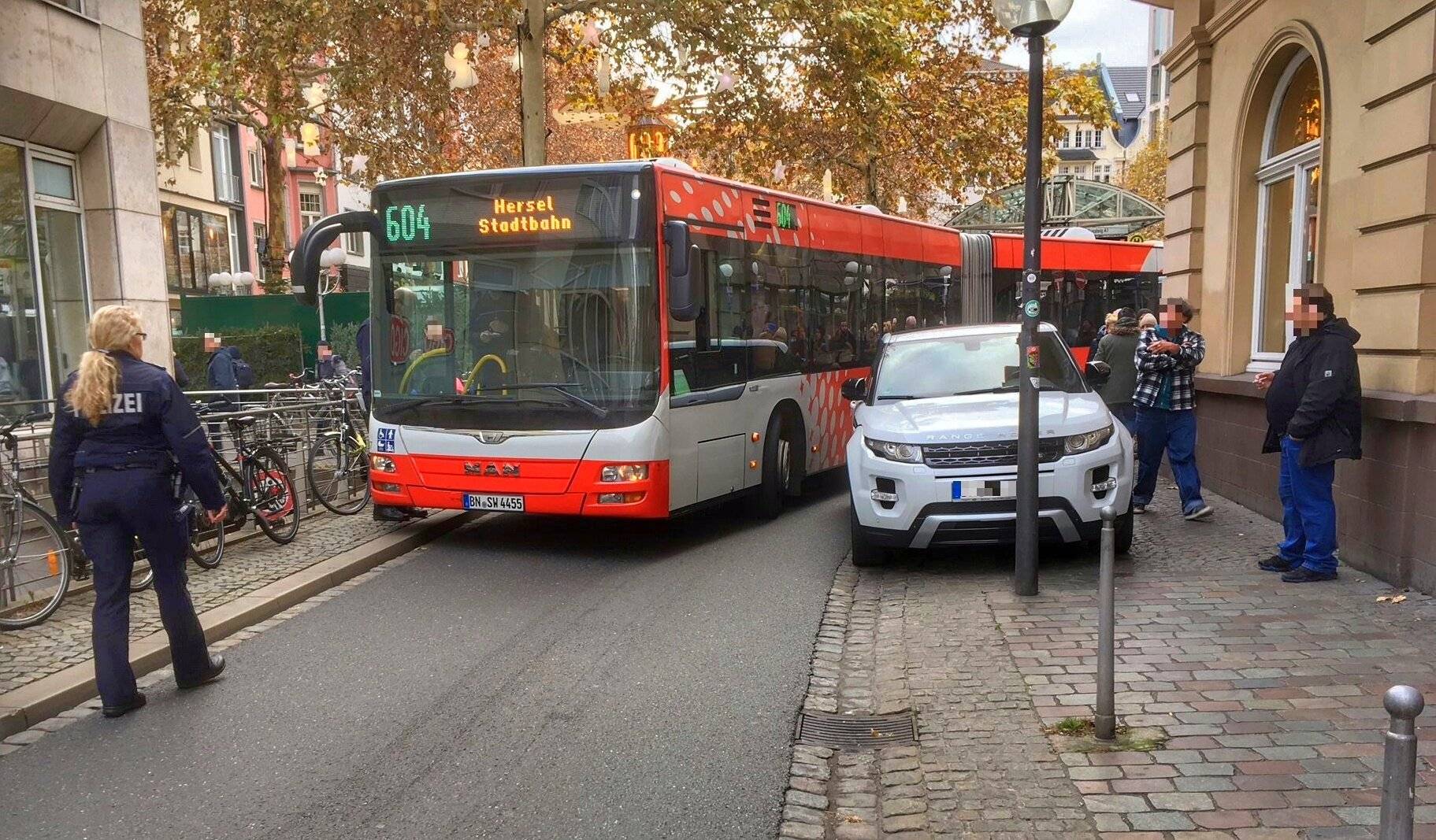City seeks solution at bus station Pigeon droppings in Bonn become a slip hazard
Bonn · For years, the city has been looking for solutions to the problem of pigeon droppings on streets and building facades. The ban on feeding pigeons has obviously not helped much, as can be seen in many places at the moment. Especially at the bus station the problem is clearly visible.
In fine weather, when people sit outside in the city centre and eat their food, the pigeons are not far away and pick up falling crumbs. On Münsterplatz, small children like to run after them and have fun. In other places, pigeons are more of a nuisance. Their droppings not only soil house facades and pavements, but also attack the fabric of the building and can also cause health problems in humans.
Many buildings, such as churches, are therefore equipped with pointed wires or spike grids - so-called pigeon deterrents - on windowsills, ledges and roofs to keep pigeons from landing there. Where these obstacles are missing or damaged, they can be seen in abundance: for example, currently above the entrances to empty buildings in the Viktoriakarree or below the north and south subways. Especially the pavement and the roadway below the north subway are often so coked up that it can be quite dangerous for pedestrians and cyclists because of the danger of slipping.
Pigeon droppings in Bonn: City tightens cleaning schedule
The city of Bonn is well aware of the problem: "In the north subway, the civil engineering office has already intensified the cleaning cycle. In addition, pigeon deterrents are being installed under the DB bridge. The Civil Engineering Office is currently in final consultation with the DB on this," Isabel Klotz from the Press Office has now announced. In the case of soiling caused by pigeon droppings on private buildings such as the Viktoriakarree, the city contacts the owners. "They are urged to clean the pavement and to take measures to keep the pigeons away. However, it is very difficult to order measures here. The city relies on cooperation and understanding here," says Klotz.
In order to curb the pigeon population in the city, paragraph 5 of the Bonn street regulations provides for a feeding ban. This is controlled by the city's public order service and the Gabi police station, says Klotz. "The public order office also responds to reports from the public." Unfortunately, however, the food is often illegally spread at night. "The anonymous feeders now also scatter the food in places that are difficult for the cleaners to access, so that the food cannot be removed so easily," says Klotz. Asked how many proceedings the City of Bonn initiated last year for violating the pigeon feeding ban, Klotz said there were eight proceedings. "Five warnings were issued. Three proceedings were discontinued.
For a first offence, a warning fine of 25 euros is usually levied. The second offence is punished with a fine of 50 euros. In the case of massive spreading of pigeon feed, a higher fine can also be imposed directly. "The amount of the fine depends on the severity and frequency of the offence. For repeat offenders, the fine increases. Up to 1,000 euros are possible," Klotz said.
Working group does not see feeding ban as solution
The working group Stadttauben Bonn e. V., on the other hand, does not see the feeding ban as a solution to the problem, as can be read on the website of the association (www.stadttauben-bonn.de). Rather, supervised pigeon lofts solve these problems for citizens, city administrations and pigeons, according to the association. "The animals receive species-appropriate grain food and fresh water there and stay healthy. Since they do not have to go in search of food and because of their loyalty to their location, they mainly stay in the loft. Instead of ending up in the pedestrian zone, 80 to 90 percent of the pigeon droppings now end up in the pigeon loft and are disposed of properly from there," it continues. In addition, the pigeon eggs are replaced by plaster eggs, thus controlling the pigeon population sustainably and effectively. The association runs a rescue centre for injured pigeons in Dottendorf and a pigeon loft on the roof of the theatre on Theaterplatz in Bad Godesberg.
But recently, as reported, there have also been problems there due to increasing illegal feeding. For some time now, no pigeons have been living in the pigeon loft on Theaterplatz because the animals found enough to eat in the immediate vicinity due to massive illegal feeding, Klotz explained to the GA. The city is looking for a solution to tie the pigeons back to the pigeon house. In this context, Klotz referred to the mobile pigeon house which, after years of tug-of-war in politics over the right location, is now to be erected at the central bus station (ZOB) in Bonn's city centre in order to reduce the pigeon population there as well. The installation and the organisation of the supervision of the pigeon house are currently being implemented, Klotz told our editorial team. (Original text: Lisa Inhoffen / Translation: Mareike Graepel)




